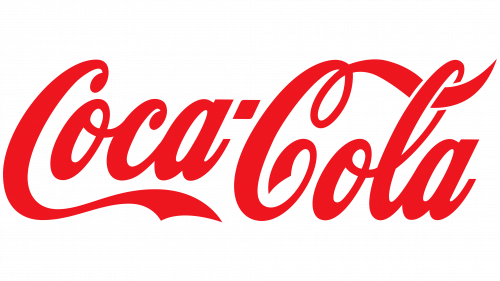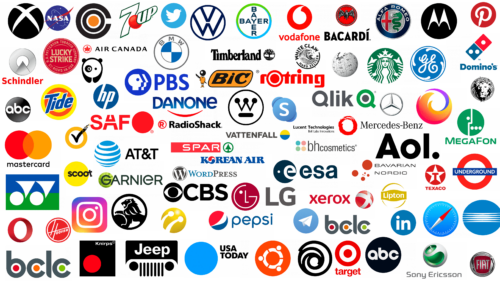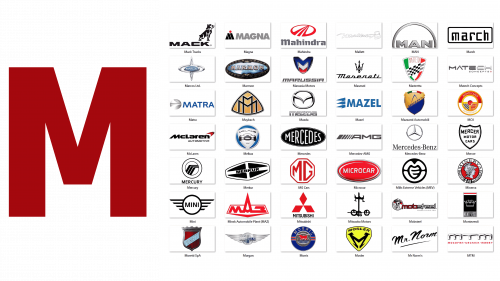The 1940s was a period of significant change and challenge. During this decade, the world was engulfed in a devastating war, leading to widespread global upheaval. It was also a watershed moment, as the advent of the atomic bomb led to the realization of new, unprecedented dangers.
Despite these challenges, daily life continued, and the era became known for its rich cultural contributions. The movie industry flourished, offering people a welcome escape. Jazz music became the soundtrack to these changes, and classic cars symbolized a combination of practicality and style.
Branding and visual identity were also undergoing a transformation during this time. The 40s saw the creation of many logos that are now considered iconic. These logos epitomized the businesses for which they were created and reflected the essence of the era, balancing the grim reality of war with hope for the future.
This piece examines some of the most memorable logos of the 1940s. Design experts provide insight into how these logos served their purpose at the time and continue to be relevant and influential.
Boeing
Boeing, the largest U.S. exporter in dollar terms, has an interesting logo history. The company was founded in 1916, not 2016, as is often mistakenly believed, and has had several different logos over the years. These logos are different in appearance, but they all carry a sense of movement, dynamism, and positivity.
One of the most notable Boeing logos was introduced in 1940 and lasted for two decades. This logo was unique for its time. Made with an upward-slanting font, it created a sense of movement and an elevated mood. This design choice was symbolic, perhaps reflecting the company’s association with the sky and flight. The presence of a star in the logo further reinforces its meaning, perhaps alluding to the American flag, the Stars and Stripes.
The 1940s Boeing logo is a good example of how a simple design can effectively reflect the essence and aspirations of a company. The emphasis on movement and optimistic tone fit well with Boeing’s role in the aerospace industry, a field that is all about moving forward and reaching new heights.
Shell
The Shell logo, which first appeared in 1901, has undergone significant changes over time. It originally featured a detailed image of a scallop shell but has gradually become more simplified. The logo has consistently used the colors yellow and red, although the exact reason for this choice is not clear.
There are several theories as to why these particular colors were chosen. One is related to the company’s history in maritime trade, where yellow and red are common signal colors. Another theory is that the choice of colors was influenced by early California service stations and the Spanish heritage of many of California’s early settlers, as red and yellow are the national colors of Spain.
Over the years, the Shell logo has become an important part of branding history. It underwent a notable change in the 1940s when the Shell name and its now famous colors came to the fore. The logo, with its distinctive yellow and red scallop, underwent minor changes but always retained its core elements. This evolution demonstrates the importance of consistency in branding. The Shell logo demonstrates that even small changes can keep a brand fresh and recognizable over time.
Volkswagen
Volkswagen, founded in 1937, has a complicated history. The company’s concept came from Adolf Hitler, who envisioned an affordable car for the average person, which was in line with his plans to build an autobahn. The company’s early logo even included elements of the Nazi flag.
After World War II, Volkswagen’s damaged factory was rebuilt with help from Britain. In 1946, production increased, and control of the company was transferred to the West German government and the state of Lower Saxony. This period marked the evolution of the Volkswagen logo, which became one of the most recognizable in the world. The logo, a minimalist design in the form of a “V” above a “W” in a circle, was a perfect fit for the iconic VW Van automobile.
Despite its origins, the VW logo managed to become a symbol of more positive movements. It became associated with the hippie/peace movement and played an important role in the hip-hop culture of the early 80s. Today, the logo continues to influence culture beyond just being a symbol for an automobile company.
The Volkswagen logo is an example of minimalism and efficiency. Created in the 1940s, it has evolved into a symbol of German engineering and reliability. Nowadays, when minimalism is often favored, the VW logo serves as a testament to the power of simplicity. Its design is easily recognizable and memorable, demonstrating that less can be more.
Adidas
Adidas, now the largest sportswear manufacturer in Europe and the second largest in the world, has an interesting history. Adolf “Adi” Dassler started making shoes in 1924, but it wasn’t until 1949 that he officially registered the name of his company and created its first logo.
The original 1949 design was different from the elegant and simple logo we know today, but it laid the groundwork for future versions. It used a lowercase font, a style element that has been retained in all versions of the iconic Adidas logo.
A notable element of the 1949 logo was the elongated letter “d,” which skillfully incorporated an illustration of a shoe. This design element may have influenced the appearance of the famous Adidas stripes seen on the 1971 logo.
The 1949 logo did not last long, only lasting until 1950, when it was refined to a style close to the modern one. This early logo played a significant role in shaping the brand’s aesthetic and heritage, becoming a foundational element in Adidas’ long history.
M&Ms
The much-loved M&M’s candies have an interesting history. They first became popular among American soldiers during World War II. M&M’s candy, introduced in 1941, was ideal for the military because it did not melt in hot conditions. Therefore, the company focused on supplying these candies to the armed forces, and children had to wait their turn to eat these sweets.
The idea of chocolate and candy was not new. Forrest Mars Sr, the creator of M&M’s and son of the founder of Mars, was inspired by Smarties, a similar treat he saw in Britain during the Spanish Civil War.
What really helped M&M’s stand out was their branding. The name came from the initials of Mars and Bruce Murry, the son of the president of Hershey Chocolate, who had a stake in the company. The original logo was simple – black and white text – but it has changed color and style several times over the years. Despite these changes, the logo remained mostly the same, except for a brief period in early 2023 when it was changed to “Ma&Ya’s.”
The M&M’s logo reflects the spirit of its time. It managed to inject fun and color into the era of basic design. Like the candy itself, the logo became a symbol of joy against the backdrop of that era, making it memorable and iconic.
Coca-Cola
The Coca-Cola logo is a great example of timeless design. Its unique style is familiar throughout the world. The logo dates back to 1887, but it was in the 1940s that it took on the look we know today. Matt Burns, a leading beverage branding expert, believes this timing is no accident.
The 1940s was a golden age for graphic design. Designers like Paul Rand and Saul Bass created logos that are still admired today. The Coca-Cola logo from 1941 stands out among them. It has undergone minor changes over the years, but its basic design, incorporating the Spencerian font and bright red color (it even has its own Pantone shade named after the drink), has remained unchanged.
This logo shows how well Coca-Cola understands its own brand. It is simple yet effective, allowing the company to remain creative for over 135 years. For example, Coca-Cola’s project with Rosalia called Move allowed for a new take on the typeface. The launch of Diet Coke in 1982 was another innovation that did not stray from the brand’s roots. Burns believes other brands can learn a lot from Coca-Cola’s approach.
His advice to brands is this: know where you stand and stay true to your brand’s core values. It’s important to listen to both your intuition and your brand identity. Changing too often to fit trends can make it difficult to create long-term brand value and meaning, as Coca-Cola has successfully done since 1941.
Lambretta
Lambretta, established alongside other famous Italian brands such as Ferrari and Ducati, is often associated with the color red. This choice of color contributes to the brand’s distinctive style. The Lambretta logo is known for its horizontal stripes connecting the letters, which was most likely done for practical reasons. This feature allowed the logo to be applied more efficiently on the conveyor belt, allowing workers to apply it in one piece rather than attaching each letter individually.
The lettering on the Lambretta logo, especially the initial capital “L,” is unique. It is often mistaken for a capital “I” because of its straight and vertical lettering, lacking the italicized twist that characterizes some other logos. This design seems to be a product of its era, probably created in a factory using available tools and technology. This straightforwardness and honesty give the Lambretta logo a compelling charm that sets it apart from its more stylistically refined competitors.
Vespa
Vespa is known for its preference for the color blue, which sets it apart from Lambretta. Like the Lambretta, the Vespa logo features horizontal stripes connecting the letters, perhaps for the same practical reasons of assembly line assembly.
The Vespa logo is particularly notable for its initial capital letter “V,” which symbolizes the brand’s name, meaning “Wasp” in Italian. The “V” represents a tendril, and its diagonal orientation resembles the body of a wasp, creating a sense of movement and a hint of aggression. This design accurately reflects the essence of the brand and its products, matching the lively and dynamic spirit associated with scooters.
Manchester United
Manchester United Football Club, originally called Newton Heath Lire, was founded in 1878. Since then, it has become one of the biggest soccer clubs in the world. Last year, Forbes estimated its value at $6 billion. Branding has played a crucial role in the club’s growth, from selling paraphernalia to striking lucrative television rights deals.
In the 1940s, Manchester United introduced two elements to its emblem that have now become iconic. The first is the inclusion of the clipper from the Manchester coat of arms, granted in 1942. This symbol was chosen to represent free trade and entrepreneurship. It also had a sort of competitive element to it, perhaps intended to anger competitors from Liverpool, a coastal city that Manchester bypassed with its trade channel.
The second element of the logo was the “red devil.” This symbol became closely associated with the club and its style of play. The nickname “Red Devils” became popular after the Munich airplane crash under Sir Matt Busby. However, the Red Devil as a club symbol actually dates back to the 1940s.
These additions to the Manchester United emblem in the 1940s played an important role in shaping the club’s visual identity. They reflect both Manchester’s local history and the spirit of the soccer club.












